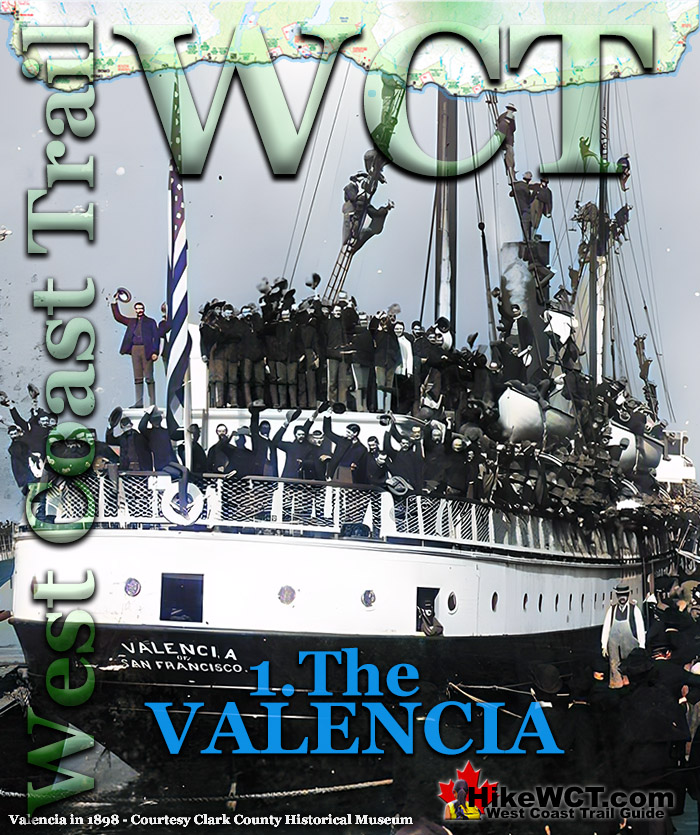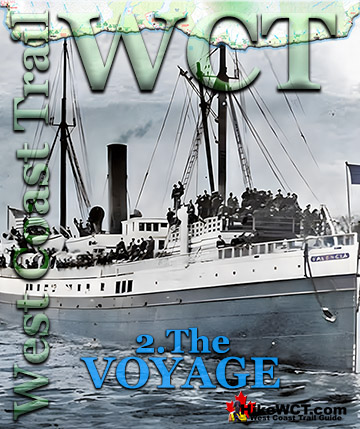![]() The Valencia was a 252-foot-long passenger steamship built in 1882 in Philadelphia. She served as a passenger ship down the eastern coast of North America until 1898 when she was sold to the Pacific Steam Whaling Company and brought around Cape Horn to the West Coast. There she briefly operated as a troopship for the United States army in the Spanish-American War. She could transport 606 troops and 29 officers between San Francisco and the Philippines.
The Valencia was a 252-foot-long passenger steamship built in 1882 in Philadelphia. She served as a passenger ship down the eastern coast of North America until 1898 when she was sold to the Pacific Steam Whaling Company and brought around Cape Horn to the West Coast. There she briefly operated as a troopship for the United States army in the Spanish-American War. She could transport 606 troops and 29 officers between San Francisco and the Philippines.
The Valencia Disaster
![]() 1. The Valencia
1. The Valencia ![]() 2. The Voyage
2. The Voyage ![]() 3. The Boats
3. The Boats ![]() 4. The McCarthy Boat
4. The McCarthy Boat ![]() 5. The Bunker Party
5. The Bunker Party ![]() 6. On the Valencia
6. On the Valencia ![]() 7. The Rafts
7. The Rafts ![]() 8. The Turret Raft
8. The Turret Raft ![]() 9. The Rescue Ships
9. The Rescue Ships ![]() 10. The Aftermath
10. The Aftermath ![]() 11. The Survivors
11. The Survivors ![]() 12. The Lost
12. The Lost
The West Coast Trail
![]() Prologue
Prologue ![]() 1: The West Coast Trail
1: The West Coast Trail ![]() 2: When to Hike & Fees
2: When to Hike & Fees ![]() 3: Trailheads
3: Trailheads ![]() 4: Getting There
4: Getting There ![]() 5: Considerations
5: Considerations ![]() 6: Campsites
6: Campsites ![]() 7: Shipwrecks
7: Shipwrecks ![]() 8: Routes
8: Routes ![]() 9: Sights & Highlights
9: Sights & Highlights
In 1899 the Valencia returned to working as a passenger ship from her new home port, based out of San Francisco. Though well designed for Atlantic cruising, the Valencia was poorly designed for the rough Pacific Ocean storms common along the West Coast, during the harsh winter months. She was too slow, too small and too exposed to stormy weather. The bridge was poorly located too far from the bow reducing visibility considerably. In stormy weather this made her much more likely to strike an unseen obstacle and sustain hull damage. Her ability to withstand hull damage was also a major concern. More modern ships had double bottoms and could easily absorb hull damage that the Valencia could not. In the notoriously stormy, poor visibility waters off the West Coast, the Valencia was relegated as much as possible to being a backup vessel and not in regular service. In 1901 the Valencia was sold to the Pacific Coast Steamship Company and was used as a cargo and passenger ship all along the coast as far north as Alaska. In 1902 she collided with the steamer Georgia in Elliott Bay off Seattle, ripping a hole in her hull above the water line. The assessment of the damage revealed that if it occurred below the waterline she would almost certainly have sunk. Along the coast of Alaska in October 1905 she ran aground while entering the harbor of Saint Michael, Alaska. After jettisoning about 75 tons of cargo, she was able to be pulled free by a tug and continued her voyage. Following this accident, the Valencia was kept out of service as much as possible, especially during the winter. Just two months later, in the middle of the winter she was brought back into service to cover for the Puebla, laid up for repairs. The route was ferrying passengers up the coast from San Francisco to Victoria and Seattle. She would make this voyage twice, with the first being relatively uneventful, while the second would end in disaster.
Victoria Daily Times Valencia Headline January 24th, 1906
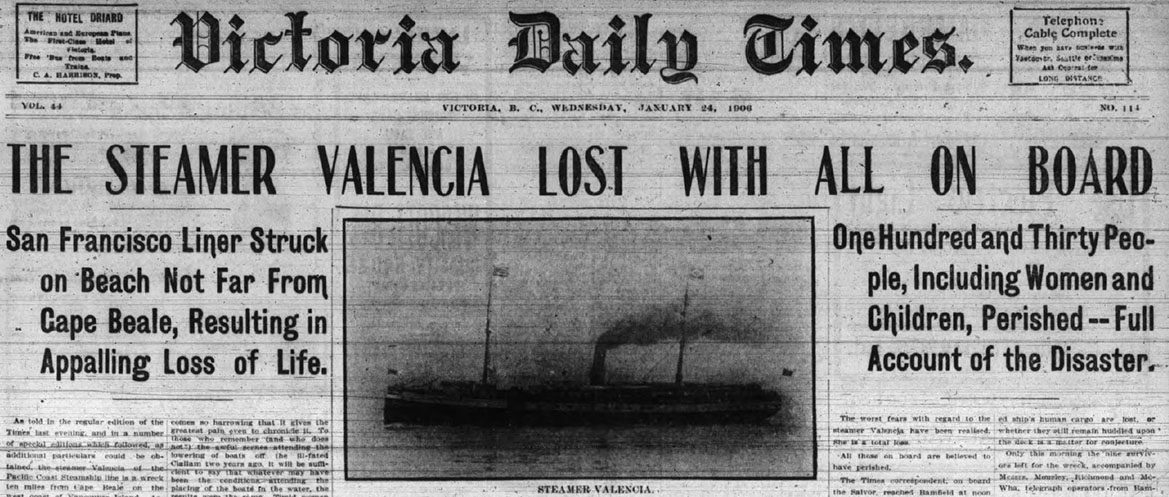
Shallow Graves on the Sandy Beach
The Daily Colonist newspaper on the 3rd of May, 1906 reported, “On Monday another body of a victim of the wreck of the Valencia, the decomposed corpse of a child, was picked up by Mr. Logan in the vicinity of the wreck, and was buried. The body could not be identified. There are now thirteen bodies buried in the shallow graves on the sandy beach, not far from the scene of the wreck, all unidentified. A number of arms and legs and some skulls have also been recovered, and each buried. A few days ago a leg, with boot and stocking intact, was washed ashore, and buried. The graves made on the island coast are very shallow, and it was anticipated by those who covered up the remains that the Dominion government would have ordered all exhumed and brought to Victoria for interment.” The Valencia was a shipwreck happened more than three months before this article was printed and bodies, or parts of bodies were still being found.
Bodies Drifted to Darling Beach 4.1km from the Valencia
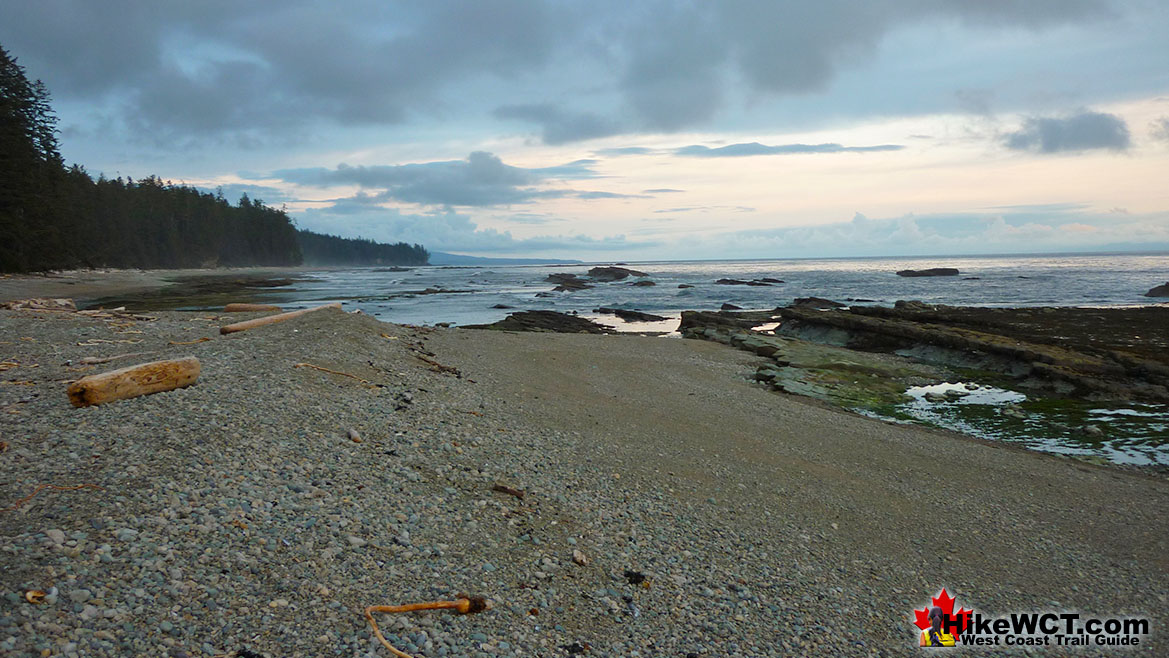
The events that played out are astounding, horrific, incredible and unbelievable. The sandy beach, not far from the wreck referred to is next to Darling River and now the location of one of the campsites along the West Coast Trail.
The Beach at Darling River
Every summer hikers camp along this serene stretch of beach beside Darling River. Few people know that just hours after the Valencia wrecked, bodies began drifting in and washing up on the beach here. So many bodies were buried in shallow graves, though most were exhumed later, many almost certainly remained. The above picture was taken next to Darling River looking down the coast, toward where the Valencia wrecked 4.1 kilometres away.

The Valencia Disaster
The Valencia disaster is a tragic set of events and circumstances that are horrific and astounding, yet few people know. The Valencia shipwreck was so shocking to the world that it set in motion the creation of what would eventually be the West Coast Trail. The shock to the world was not so much the number of lives lost, but the fact that so many deaths occurred after others made it ashore, or when ships arrived. The wonderful trail we see today with its ladders, bridges, boardwalks, cable cars and campsites was back then lacking all of these. The lucky few who managed to get ashore nearly all describe the forest along the coast as impenetrable. To grasp what Valencia survivors faced you have to imagine these modern images of the West Coast Trail without the bridge over the ravine, or the trail clearing pictured right. At the time of the Valencia disaster there was not even a defined trail to follow and ankle deep snow on the ground. Also, these recent pictures were taken in nice, summer weather, not the stormy, winter nightmare that the victims of the Valencia shipwreck faced.
No Bridges, Ladders, Trail Clearing, or Even a Trail in 1906

The Uniquely Unforgiving West Coast
To tell the story of the Valencia, you need to sift through all the newspaper reports and survivor interviews. But you also have to understand the place it went ashore. The West Coast of Vancouver Island is a uniquely unforgiving place and the Valencia wrecked in a place that was inconceivable bad. The stern of the ship was about 18 metres from the shore, yet the gap was almost impossible to cross with huge breakers crashing all around them. The shoreline cliffs across that gap were even more of an obstacle. Described by the Canadian investigators that surveyed the site: “The coast where the wreck occurred consists of perpendicular, and, in some places, overhanging rocks, from 60 to 80 feet in height above high water, at which time the sea breaks against the base of the cliff. Outside the cliff are numerous rocks, most of them submerged at high tide, but forming at all stages of the water a great menace to even the smallest craft, because of the surf which continually breaks upon or over them.”
Valencia Wrecked Along the Terrifying West Coast
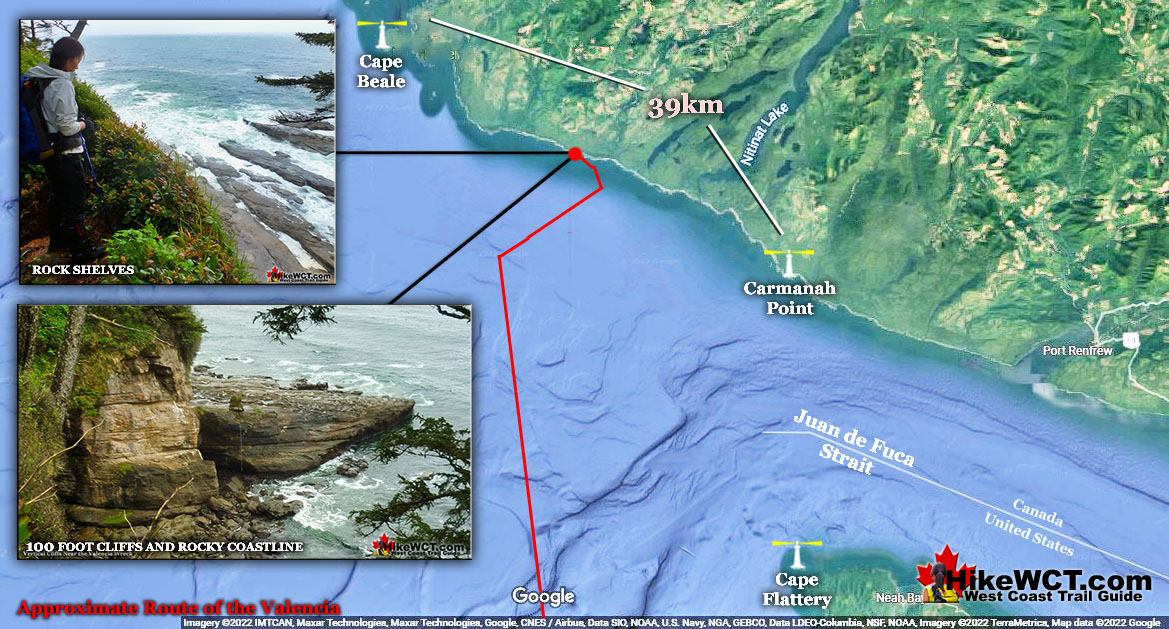
They tried boats and brave volunteers to swim, then watched as they were slammed against the jagged reefs and killed. One man, Lorense Olsson somehow made it to the shore the first chaotic night only to face a vertical cliff in the morning which he had no hope of climbing. The desperate people on the Valencia signalled him to cross a narrow gap and climb up the cliff. He couldn’t make the gap and the horrified people on the ship watched him slammed against the cliff by the mountainous waves rolling in and killed.
Rescue Ships Abandoned the Valencia Survivors
The rescue ships that arrived on the scene were unwilling to get close to the Valencia, fearing wrecking themselves. They quickly chose the alternative, rescue from the shore and sailed away to send rescue parties along the shore. As they sailed away from the Valencia, astoundingly, they left no ship behind and the last two life rafts departed from the Valencia and watched the rescue vessels sail away. The Call newspaper in San Francisco ran this headline on the 28th of January.

Within minutes after the rescue ships departed, everyone on the Valencia would be dead or drifting helplessly out to sea, clinging to pieces of the ship. Sometime between noon and 1pm, freezing from the cold ocean spray, they would suddenly fall into the ocean when the Valencia finally broke and folded like a jackknife. We know this because the shore party arrived at the cliffs above just before this happened. They watched at the Valencia finally broke and sunk beneath the waves, throwing dozens of helpless people, mostly women and children into the freezing ocean where they drowned or froze to death as the current moved them out into the Pacific where the rescue ships had recently departed.
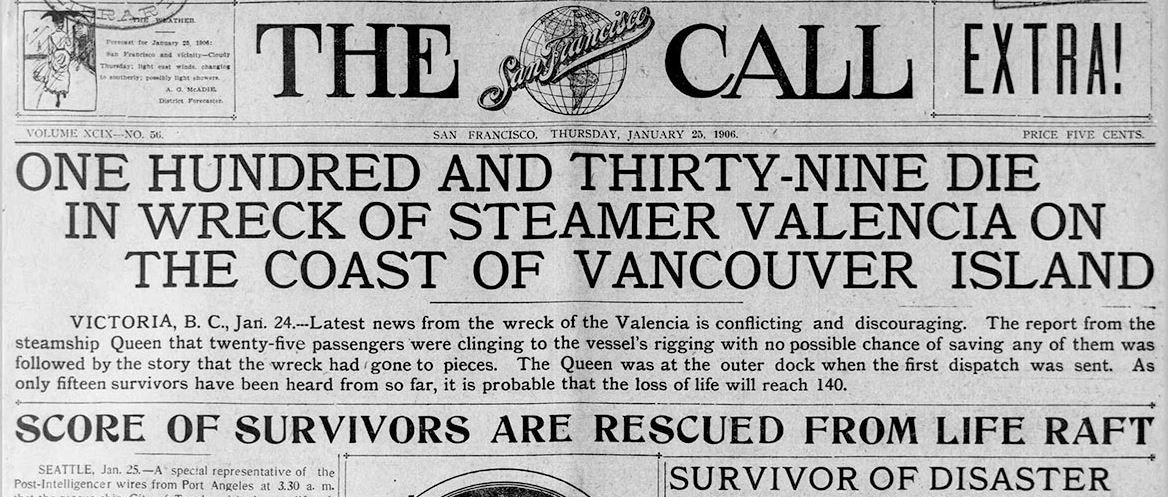
Message in a Bottle Found Months Later
 We won’t know the details of what the final victims of the Valencia shipwreck went through, but several months later a bottle floated ashore 800 kilometres away, on the distant island of Haida Gwaii. This bottle contained a letter written in pencil and difficult to read, which was sent from the Valencia during a moment of hopeless desperation. “We are going down off the coast. – C.F. Hayward.” No one by that name appeared on the ships manifest, however in the weeks following the disaster it was discovered that three of the passengers were registered with fake names. The passenger listed as C. West was actually Roy Hazard, 21 years old, from Los Angeles, California who had run away with two passengers listed as Miss T. Martin and T. Simpson. Also registered under fake names, they were in fact Mabel Rowland, 18 years old, and Lulu Rowland, 16, from Los Angeles. Before the trio left town, Hazard gave a letter to a friend, with instruction to post it after they sailed. The friend forgot to post it until five days later and only after it arrived did the parents learn that all three were missing and presumed dead. The bodies of Roy Hazard and Mabel Rowland were recovered and identified by their fathers. Lulu Rowland's body was never found.
We won’t know the details of what the final victims of the Valencia shipwreck went through, but several months later a bottle floated ashore 800 kilometres away, on the distant island of Haida Gwaii. This bottle contained a letter written in pencil and difficult to read, which was sent from the Valencia during a moment of hopeless desperation. “We are going down off the coast. – C.F. Hayward.” No one by that name appeared on the ships manifest, however in the weeks following the disaster it was discovered that three of the passengers were registered with fake names. The passenger listed as C. West was actually Roy Hazard, 21 years old, from Los Angeles, California who had run away with two passengers listed as Miss T. Martin and T. Simpson. Also registered under fake names, they were in fact Mabel Rowland, 18 years old, and Lulu Rowland, 16, from Los Angeles. Before the trio left town, Hazard gave a letter to a friend, with instruction to post it after they sailed. The friend forgot to post it until five days later and only after it arrived did the parents learn that all three were missing and presumed dead. The bodies of Roy Hazard and Mabel Rowland were recovered and identified by their fathers. Lulu Rowland's body was never found.
Heartbreaking Story of Frank Bunker
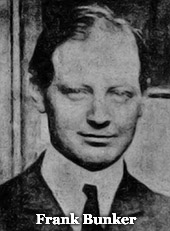 Despite the tragic deaths of an estimated 140 people, the number is hard to tally due to the poor records of the time. The number is often shown to be 126, however, it is based on the vaguely accurate passenger list. This list has many discrepancies and doesn’t list nearly all the children aboard. On the Valencia, there were some miraculous survivors. Frank Bunker was one of the first to get away from the vessel on a lifeboat with his wife, two children and a few from the Valencia's crew. The boat managed to get a couple hundred metres from the ship while others were smashed to pieces. As they rowed into the darkness a giant breaker tossed the boat toward the shore and everyone on board fell into the icy water. Bunker, his wife, his son and crewman Richley clung to the boat, but his daughter and the others disappeared. Bunker shouted to his wife to hold on as another breaker threw the boat against the shore and he never saw his family again. He would find himself on the rocky shore on a reef, soaking wet and freezing, looking out into the darkness to where his family just disappeared. Bunker and Richley would then find themselves in a fight for life that would be joined by a few other men that survived the disastrous launching of the lifeboats during the first hour of the wrecking of the Valencia.
Despite the tragic deaths of an estimated 140 people, the number is hard to tally due to the poor records of the time. The number is often shown to be 126, however, it is based on the vaguely accurate passenger list. This list has many discrepancies and doesn’t list nearly all the children aboard. On the Valencia, there were some miraculous survivors. Frank Bunker was one of the first to get away from the vessel on a lifeboat with his wife, two children and a few from the Valencia's crew. The boat managed to get a couple hundred metres from the ship while others were smashed to pieces. As they rowed into the darkness a giant breaker tossed the boat toward the shore and everyone on board fell into the icy water. Bunker, his wife, his son and crewman Richley clung to the boat, but his daughter and the others disappeared. Bunker shouted to his wife to hold on as another breaker threw the boat against the shore and he never saw his family again. He would find himself on the rocky shore on a reef, soaking wet and freezing, looking out into the darkness to where his family just disappeared. Bunker and Richley would then find themselves in a fight for life that would be joined by a few other men that survived the disastrous launching of the lifeboats during the first hour of the wrecking of the Valencia.
The Valencia Life Rafts
About thirty hours later the Valencia launched its last two life rafts in a desperate attempt to get to ships that arrived, but made no attempts at rescue. Constantly washed by waves over the sides of the rafts which floated low in the water. One of these rafts drifted hopelessly up the coast with the current, unable to catch the attention of any vessels. Hours would pass in the freezing, water soaked raft before one of the men succumbed to exposure. With the current dragging them up the coast, they couldn't paddle the unwieldly raft closer to shore and watched helplessly as they passed Cape Beale Lighthouse. Of the ten men that set out on this first raft, only four would survive.
Valencia's First Raft in Seattle
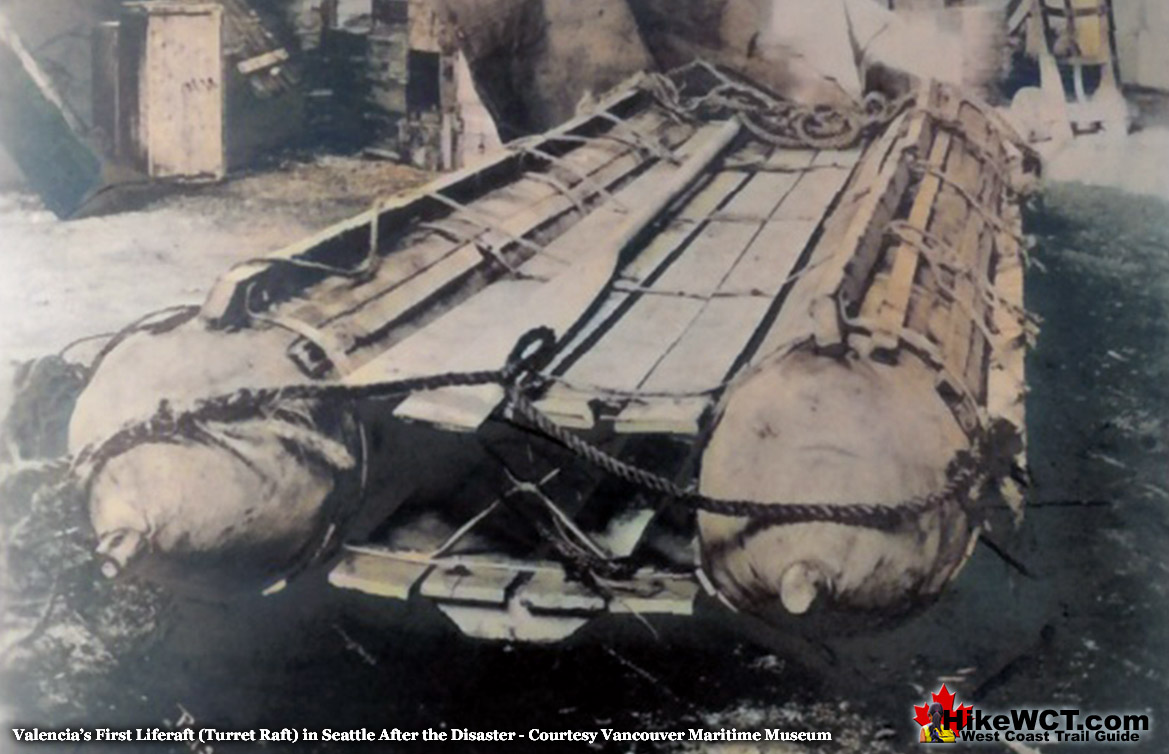
The Voyage of the Valencia
On Monday, January 22nd, 1906 the passenger steamship Valencia was nearing the end of her voyage from San Francisco to Victoria and Seattle. Out of sight of the coast for some time and steaming blindly in the dark toward the Graveyard of the Pacific, the Captain used various methods to estimate his position in order to navigate safely into Juan de Fuca Strait. Badly underestimating their position, Captain Johnson steered in the presumed direction of Cape Flattery Lighthouse which he expected to soon see. Cape Flattery marks the south end of Juan de Fuca Strait, while across the strait Vancouver Island lays in darkness. At 1150pm the Valencia struck a ledge a few hundred metres from the shore and began taking on water rapidly. Attempting to beach the ship, the ship pulled off the ledge and backed onto a reef just 18 metres from the shore. Despite this close proximity to land, they found themselves surrounded by crashing waves, jagged reefs and steep cliffs. In the following 36 hours, an estimated 178 people on the Valencia would be reduced to just 38 survivors.
Approximate Location of the Valencia Along the West Coast Trail

The Valencia had seven lifeboats and three life rafts. In the first hour three of the boats were smashed to pieces against the ship, killing all but one on board. Another two boats managed to get away from the ship, then flipped and smashed against to pieces against the reef, killing most of the passengers. One boat disappeared into the night and was presumed to have flipped and drowned all on board. A handful of men made it to shore from the two flipped boats only to find themselves at the base of vertical cliffs. When daylight came survivors on the ship watched as one man on the shore attempted to climb the cliff and fell to his death. As the Valencia disintegrated on the reef, pounded by waves, remaining survivors clung to what was left of the ship above water. At about noon on Wednesday, January 24th, the Valencia broke apart and the remaining survivors fell into the frigid water to drown, drift out to sea or get thrown onto the jagged rock along the shore.
Wreck of the Valencia at Low Tide February 2nd, 1906

Aftermath of the Valencia Disaster
In the days and weeks that followed the difficult task of recovering the bodies strewn along the coast was undertaken. In the following days and weeks an estimated 59 bodies were pulled from the sea or found thrown high on rocky ledges at the base of cliffs or inside caves cut by the ocean. In 1906, the West Coast of Vancouver Island was mostly inaccessible by land and very difficult to access in the stormy winter months. Most of the victims of the Valencia disaster would never be recovered. Bodies would be found several kilometres up the coast and some would collect along beaches as far away as Tofino. Bodies would be pulled from the ocean and hastily covered by sand and rocks to keep birds from eating them. Days later, when boats could finally get in to land, bodies would be dug up and transported to ships to be taken to Victoria, Seattle or San Francisco. In such a remote, chaotic, and difficult to access place many bodies likely did not make it off the beach.
The Bunker Party Survivors
The 38 survivors of the Valencia disaster lived through horrific events. Nine men would survive from the two boats in the first hour that got away from the Valencia for a short distance before flipping in the surf. They managed to crawl their way to the edge of the cliffs and survive the night in freezing rain, huddled against a cliff. The following morning they found a way to climb up the cliff and follow a telegraph cable to a lineman’s hut several kilometres away. In the hut they were able to contact the outside world for help, though it would be several hours before ships would arrive. This group of survivors became known at the Bunker Party, after Frank Bunker who took charge and energetically led the party.
Bunker Party and Rescue Party Leaving Pachena Bay for Bamfield January 26th
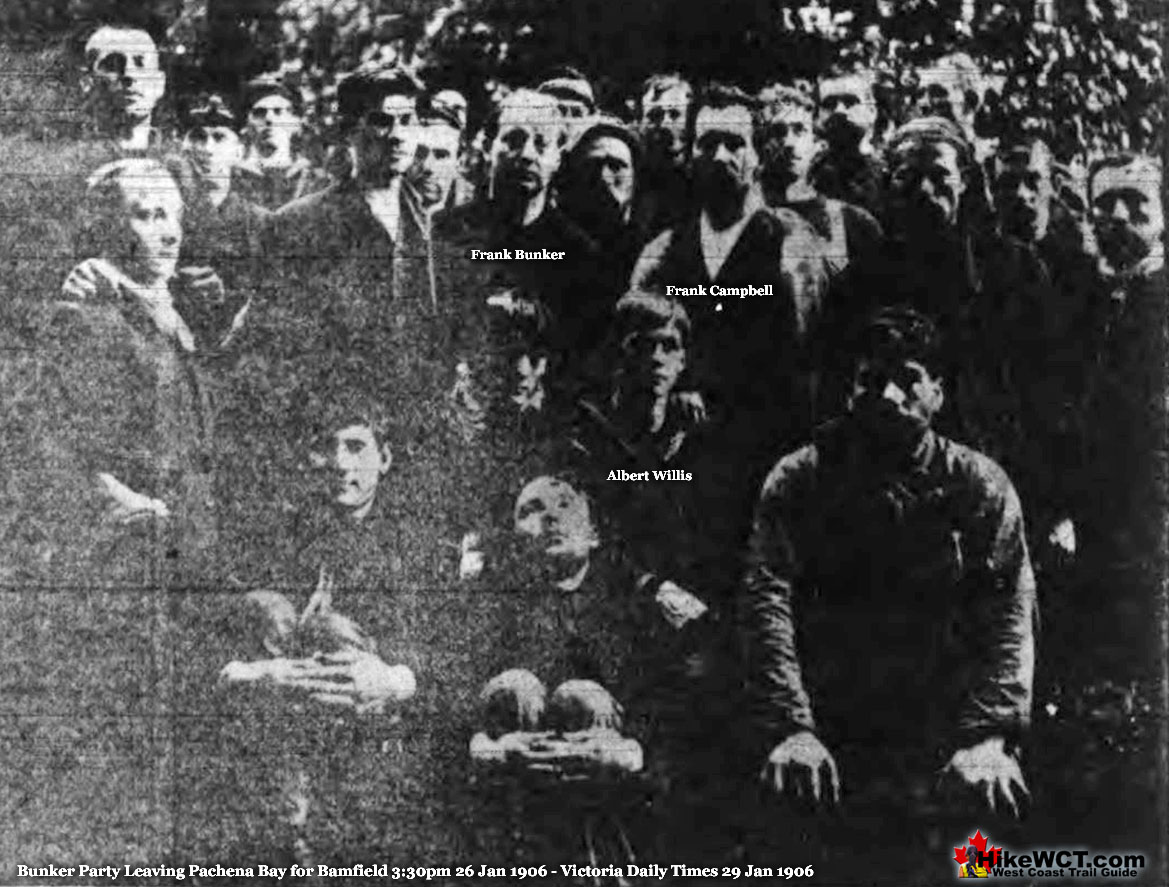
The McCarthy Boat Survivors
Meanwhile on the Valencia the one remaining lifeboat was successfully launched with six volunteer crewmen under the command of boatswain Timothy McCarthy. The goal of the McCarthy Boat was to get to shore and make their way up to the cliff above the ship. The Valencia had a Lyle gun capable of firing a rope to the top of the cliff where a boatswain’s chair could be rigged to transport everyone off the ship. Owing to the stormy weather, bad visibility, strong current and it seems, an overpowering fear of crossing the breakers to reach shore, the boat would travel several kilometers down the coast before reaching land near the Cape Beale Lighthouse. They would get to the lighthouse and contact the outside world for help one hour after the Bunker Party did.
The Valencia's Life Raft Survivors
The following day, Wednesday, January 24th, a ship finally appeared in the distance and the Valencia survivors desperately clinging to parts of the ship above water, hoped for imminent rescue. As several minutes passed and the ship refused to approach or launch boats, the two remaining life rafts were used. This was a desperate attempt that didn’t seem likely to succeed. First, the rafts are low in the water and the passengers would be partly immersed in the freezing ocean. Second they are hard to maneuver and rowing past the breakers crashing all around them seemed unlikely. Incredibly the first raft, manned by only ten men, as nobody else would get aboard, made it through the breakers relatively easily.

The Second Raft Launched from the Valencia
The second raft, smaller than the first was then launched and packed well over capacity with nineteen men. Remarkably this overcrowded raft managed to clear the breakers as well and head out to sea. Astoundingly, during this time the would be rescue vessel departed, leaving the two rafts hopelessly adrift with half submerged survivors dying of exposure. Miraculously, the second raft was spotted hours later by a ship called in to search for the Valencia. The Topeka pulled the survivors off the raft and most were barely alive and couldn’t stand up. Incredibly, of the two rafts this second raft, later dubbed the Topeka Raft was the lucky one.
Valencia's Second Raft With Nineteen Survivors

The First Raft Launched from the Valencia
The first raft was not so lucky and the ten freezing men on board when through an extraordinarily tragic saga eventually ending at Turret Island and astounding 37 kilometres from the Valencia. Four men would barely survive to tell the story of the Turret Raft.
Victoria Daily Times Headline Saturday, January 27th, 1906
The Valencia Disaster Continued: 2. The Voyage
Best West Coast Trail Sights & Highlights
The Valencia Disaster
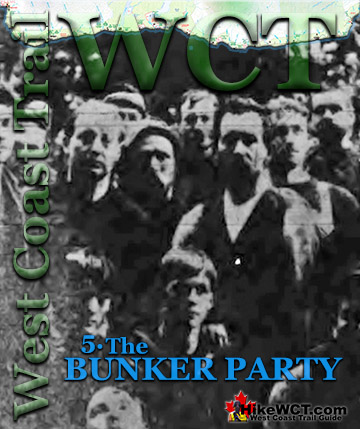
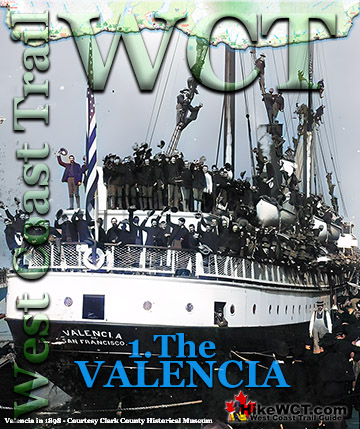
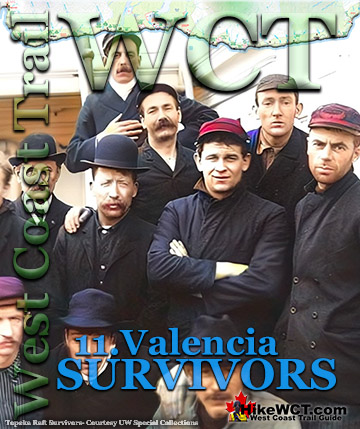
West Coast Trail A to Z
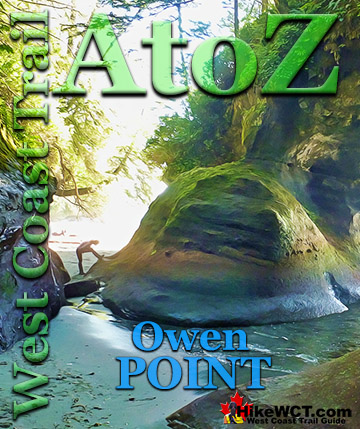
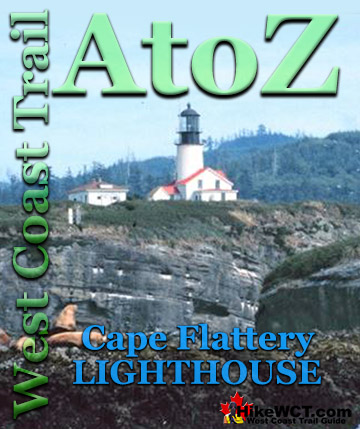

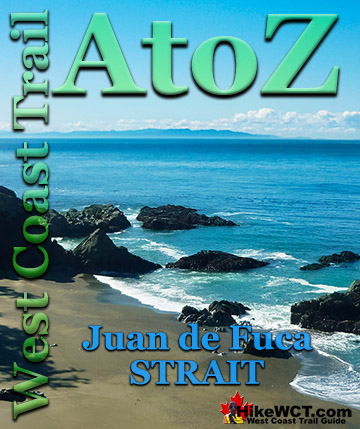
The West Coast Trail by Day
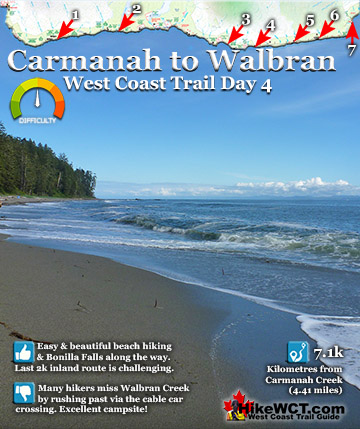
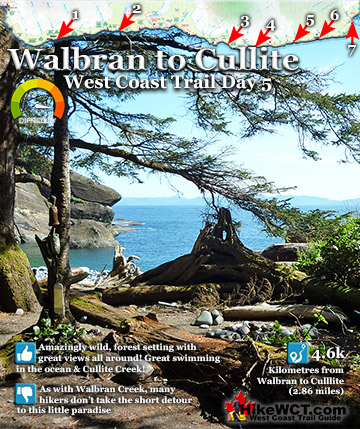
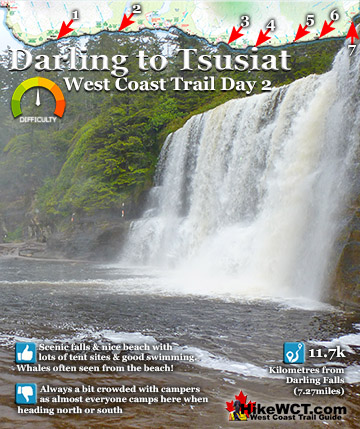
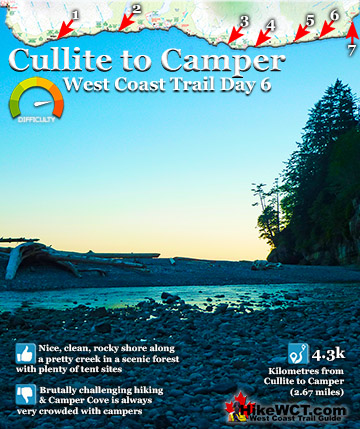
Explore BC Hiking Destinations!
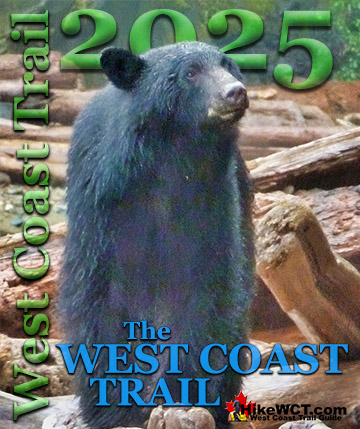
The West Coast Trail

Victoria Hiking Trails
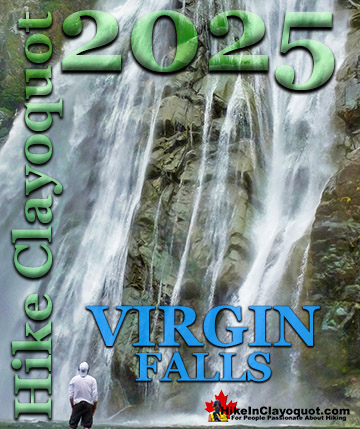
Clayoquot Hiking Trails

Whistler Hiking Trails
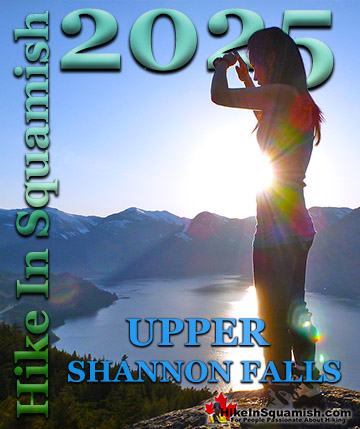
Squamish Hiking Trails

Vancouver Hiking Trails

